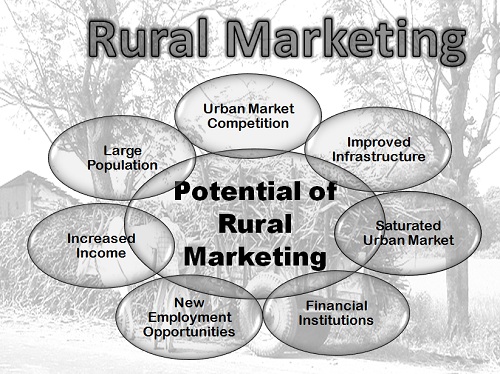
Rural Marketing in India: Definition and Features of Rural Marketing!
“Rural marketing is now a two-way marketing process. There is inflow of products into rural markets for production or consumption and there is also outflow of products to urban areas.”
The rural market has been growing steadily over the past few years and is now even bigger than the urban market. About 70 per cent of India’s population lives in villages. More than 800 million people live in villages of India. ‘Go rural’ is the marketer’s new slogan. Indian marketers as well as multinationals, such as Colgate-Palmolive, Godrej and Hindustan Lever have focused on rural markets.
Thus, looking at the opportunities, which rural markets offer to the marketers, it can be said that the future is very promising for those who can understand the dynamics of rural markets and exploit them to their best advantage.
Since ancient times, Indian villages had the concept of village markets popularly known as the village haats. The haats are basically a gathering of the local buyers and sellers. The barter system was quite prevalent, which still continues in a number of places even today. Haats are basically a weekly event, and are central to the village economy.
Definitions:
Marketing:
Identifying the needs of customers and potential customers, providing products/services that satisfy their needs, and developing efficient processes or systems to deliver your product/service to the market when, where, and how consumers want it.
Rural Marketing:
Rural marketing is now a two-way marketing process. There is inflow of products into rural markets for production or consumption and there is also outflow of products to urban areas. The urban to rural flow consists of agricultural inputs, fast-moving consumer goods (FMCG) such as soaps, detergents, cosmetics, textiles, and so on. The rural to urban flow consists of agricultural produce such as rice, wheat, sugar, and cotton. There is also a movement of rural products within rural areas for consumption.
Features of Rural Marketing:
The main reason why the companies are focusing on rural market and developing effective strategies is to tap the market potential, that can be identified as follows:
1. Large and scattered population:
According to the 2001 census, 740 million Indians forming 70 per cent of India’s population live in rural areas. The rate of increase in rural population is also greater than that of urban population. The rural population is scattered in over 6 lakhs villages. The rural population is highly scattered, but holds a big promise for the marketers.
2. Higher purchasing capacity:
Purchasing power of the rural people is on rise. Marketers have realized the potential of rural markets, and thus are expanding their operations in rural India. In recent years, rural markets have acquired significance in countries like China and India, as the overall growth of the economy has resulted into substantial increase in purchasing power of rural communities.
3. Market growth:
The rural market is growing steadily over the years. Demand for traditional products such as bicycles, mopeds and agricultural inputs; branded products such as toothpaste, tea, soaps and other FMCGs; and consumer durables such as refrigerators, TV and washing machines has also grown over the years.
4. Development of infrastructure:
There is development of infrastructure facilities such as construction of roads and transportation, communication network, rural electrification and public service projects in rural India, which has increased the scope of rural marketing.
5. Low standard of living:
The standard of living of rural areas is low and rural consumers have diverse socio-economic backwardness. This is different in different parts of the country. A consumer in a village area has a low standard of living because of low literacy, low per capita income, social backwardness and low savings.
6. Traditional outlook:
The rural consumer values old customs and traditions. They do not prefer changes. Gradually, the rural population is changing its demand pattern, and there is demand for branded products in villages.
7. Marketing mix:
The urban products cannot be dumped on rural population; separate sets of products are designed for rural consumers to suit the rural demands. The marketing mix elements are to be adjusted according to the requirements of the rural consumers.